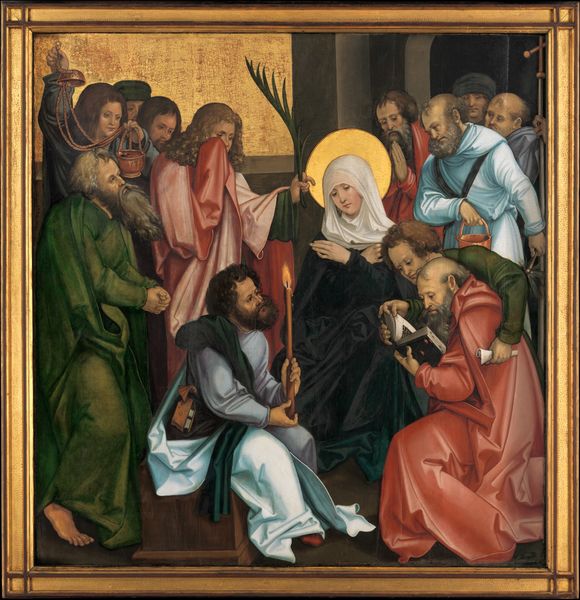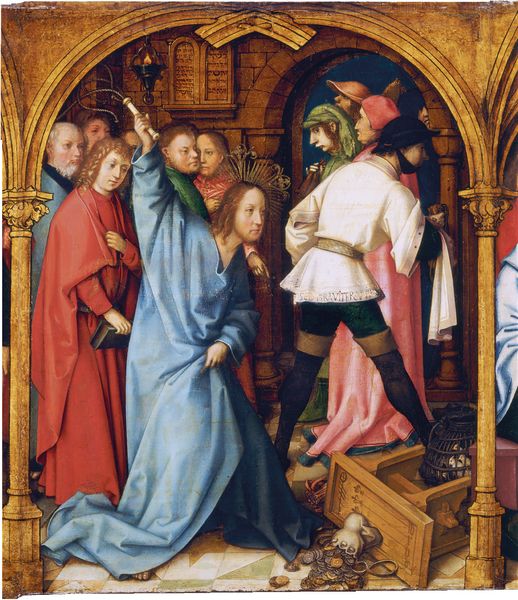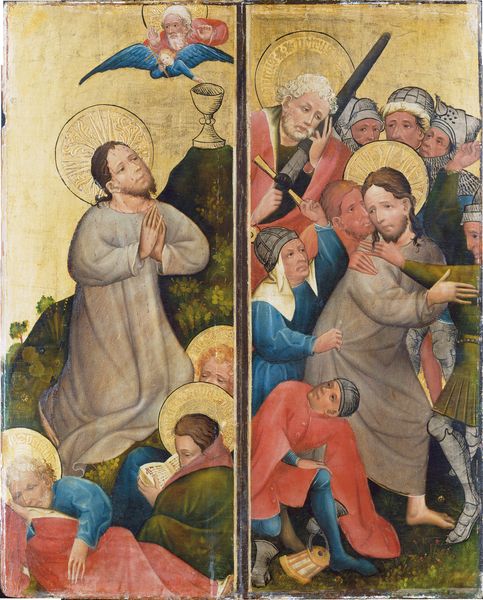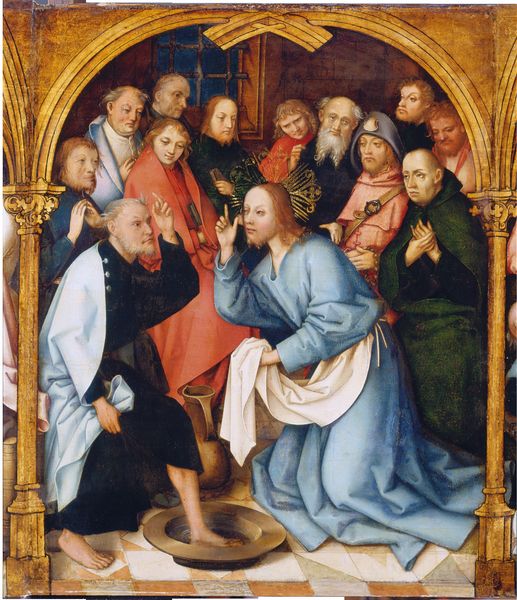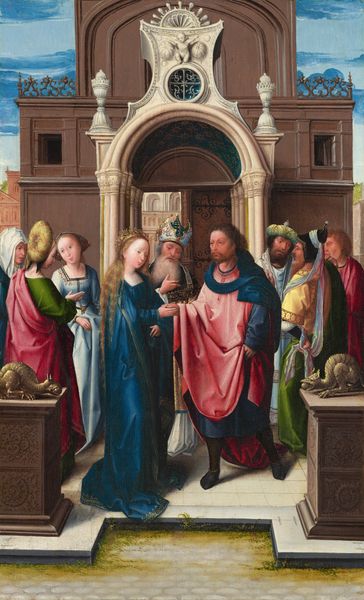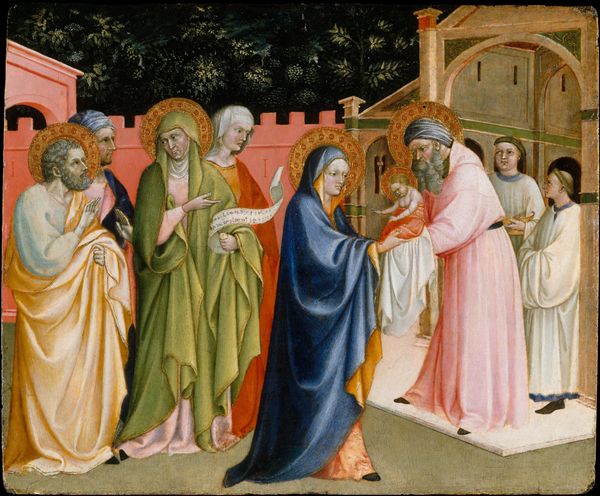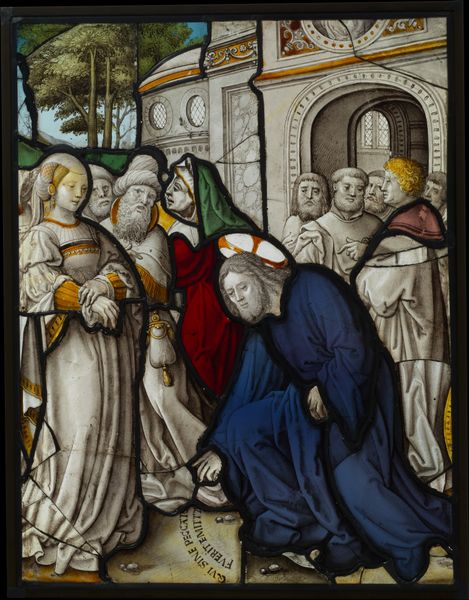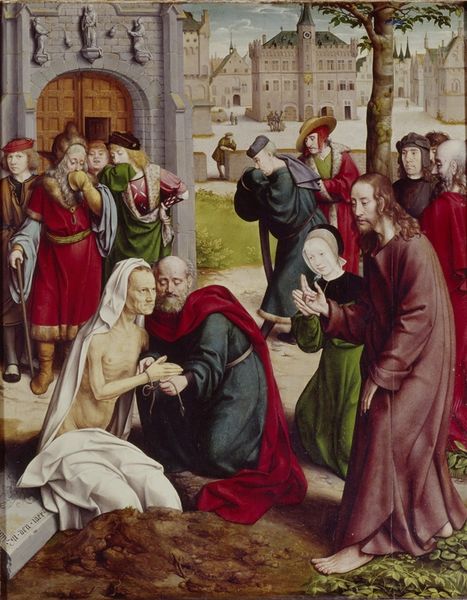
The Marriage of the Virgin 1425 - 1435
0:00
0:00
Dimensions: 25 5/8 x 18 3/4 in. (65.1 x 47.6 cm)
Copyright: Public Domain
Curator: Here we have Michelino da Besozzo's panel painting "The Marriage of the Virgin," thought to have been made between 1425 and 1435. It's oil on panel, and it beautifully represents a pivotal moment in Christian tradition. Editor: My initial feeling is, despite the momentous subject, it feels remarkably intimate, almost solemn. The deep reds and blues seem to hold a weight of reverence. It makes me wonder, what kind of marital pact were they forming, and why the spears? Curator: The spears held by the men behind Joseph symbolize their failed suit. According to the apocryphal stories, the eligible men of the tribe of Judah were asked to bring dry rods to the Temple. Only Joseph's rod blossomed, signifying God's choice, explaining that little bird perched on top! Editor: Ah, the miraculous blooming rod, an icon of divine selection. These artists are masters of non-verbal language, where flora and fauna speak louder than words. How very Renaissance. Is that sword in front meant to convey a counter-argument, almost mocking their failure, perhaps? Curator: Potentially. You could argue that it’s less mockery and more a depiction of unfulfilled earthly power set against divine will. The unsuccessful suitors seem almost petulant; perhaps that downturned gaze speaks to feelings of inadequacy that resonate even today. The closed space intensifies these emotional cues as well. Editor: Right, trapped in that maroon box. Now that you point that out, that muted background pushes forward all these heavy symbols that speak volumes, echoing narratives across time. So, from blossoming rods to symbolic birds—Michelino crafted a timeless depiction, no? Curator: Precisely. It’s a beautiful illustration of the weight of faith, love, and tradition, painted with incredible attention to detail that brings history alive. I keep wondering about their gazes though; they hold the keys to understanding how the Renaissance approached storytelling through familiar tales. Editor: And to think, all this from oil on a small panel. Art continues to teach, doesn’t it?
Comments
No comments
Be the first to comment and join the conversation on the ultimate creative platform.



